While many dogs are outgoing and full of energy, some dogs are insecure and very timid. Just like people, dogs can also lack confidence. These dogs need a little loving positive reinforcement to build up their self-esteem. By learning how to build a dog’s confidence, you can boost their overall quality of life and wellbeing.
There are a number of ways you can build your dog’s confidence to help make him feel more secure. Let’s start with the basics behind why your dog might lack confidence, then look at several confidence-building exercises and positive reinforcement training techniques you can use to help your best buddy out.
Why Your Dog’s Confidence Is Low

There are a number of reasons you might have a fearful dog. It’s possible he is genetically predisposed toward cautious behavior or he might have had a bad experience at one time.
More likely, however, your dog’s confidence is low because he wasn’t socialized very well when he was a puppy. The socialization period for puppies is usually between about 3 and 14 weeks of age. If they are exposed to novel experiences and new situations without any scary things happening during that time, they will develop a good sense of confidence.
If, on the other hand, your pooch learns that the world is unsafe and scary, he is more likely to be an anxious, fearful dog when he grows up. When that critical socialization window closes, then your dog’s confidence is generally set.
They don’t stop learning, however. So it’s possible that dog training can help your best friend to build confidence. But why is it important for your dog to be confident?
Why Is Your Dog’s Confidence Important?
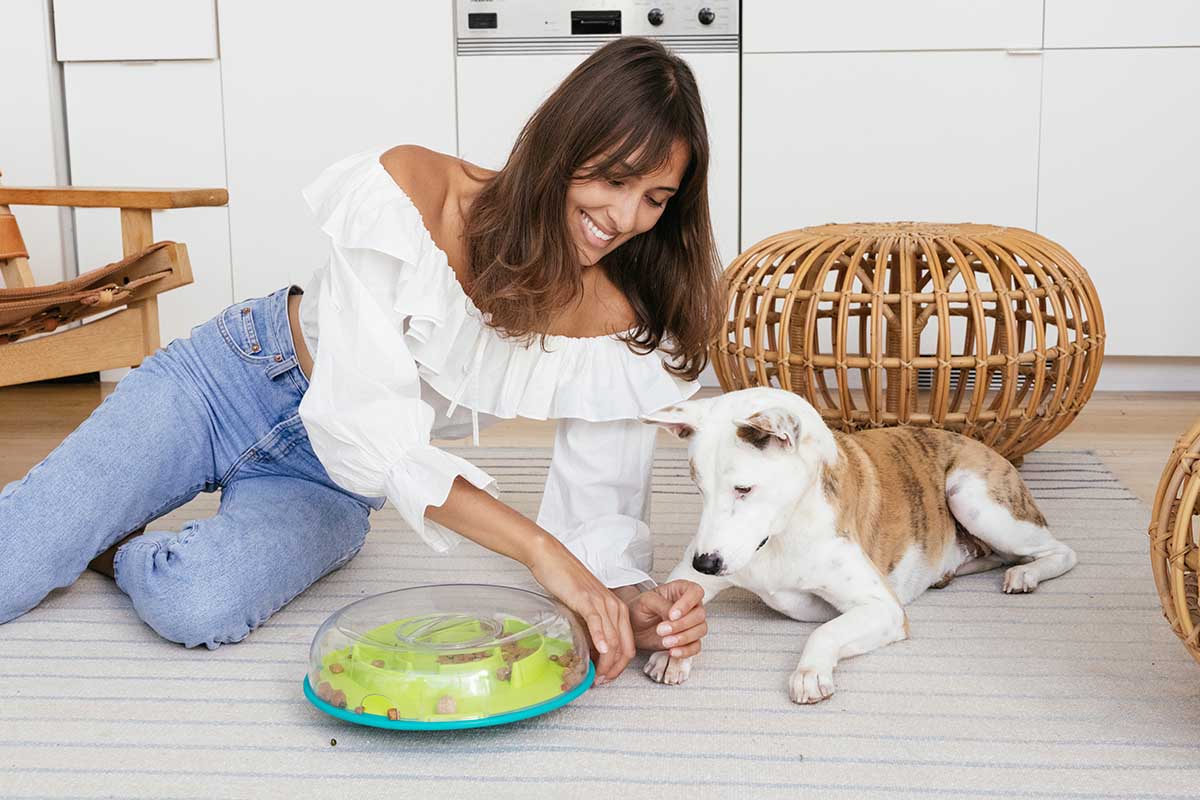
Helping your dog build confidence will help him to take the stresses of daily life in stride. There are lots of scary things out there that can cause a stress reaction in your dog, and over time, high levels of stress-related hormones can really take a toll on his health.
That’s why it’s really important for your pooch to be a confident dog rather than a shy dog. Confident dogs take those stressors in stride. Though he might startle when there’s a loud noise, the confident dog recovers quickly and goes back to what he was doing.
What’s more, if he’s a shy dog, he might respond to those stressors with behaviors that can easily be misinterpreted as aggressive responses. When he cowers and vocalizes in a nervous way, he’s signaling his fear, but to onlookers, it might seem like aggression.
That’s why it’s important for your dog to build confidence, but how can you build your dog’s confidence? Let’s look at some great ways to do just that.
Start with Basic Dog Training
It’s always a good idea to begin with some dog training to teach your dog basic obedience. Each time you go for a walk, take some treats to keep your dog’s attention. Work with your best friend by using some basic commands and confidence-building exercises. As he is able to successfully do what you ask of him, he’ll start to gain confidence and feel less timid.
It’s important to note that when it comes to confidence-building training with fearful dogs, patience is key. Nothing can be rushed. Let your dog go at its own pace. Progress with not happen overnight so set your expectations accordingly.
“Look at me” and targeting cues
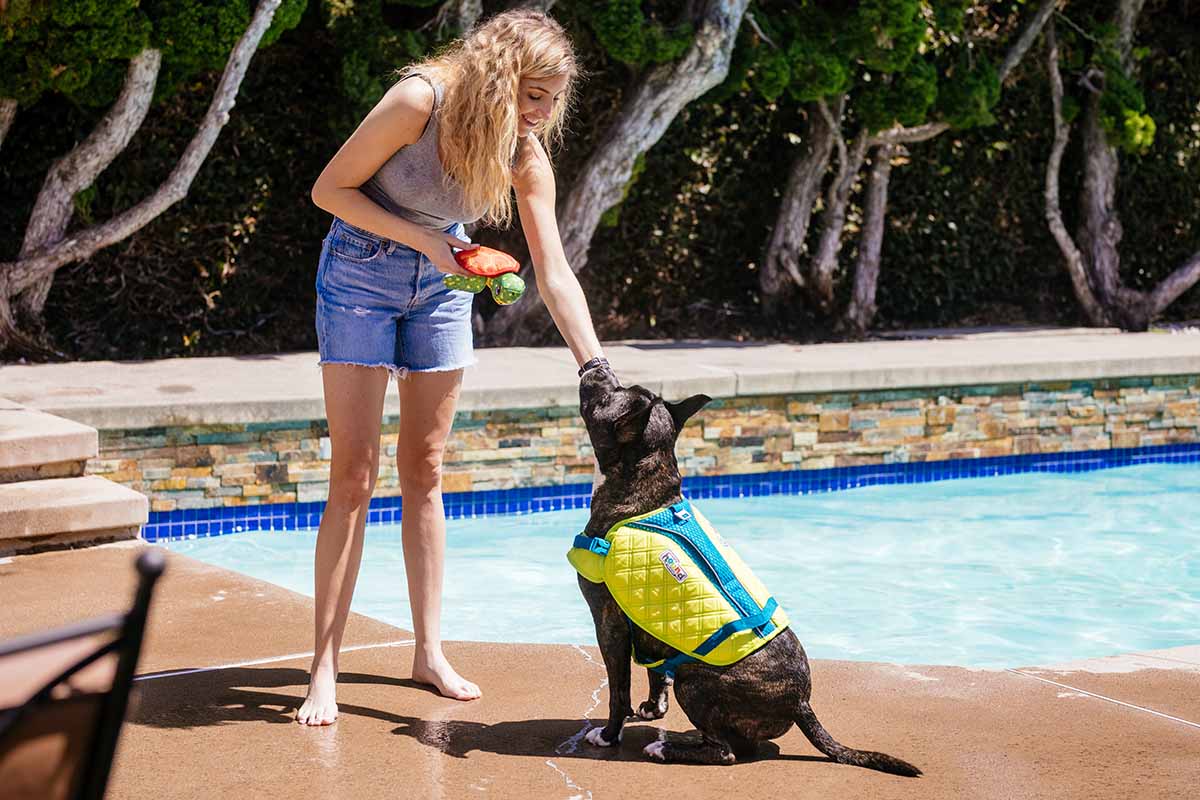
One good thing to do is teach your dog a “look at me” cue which can be followed by the sit and stay command. This will help keep your dog’s attention on you when a scary person or a scary thing gets close to them.
A great way to get your dog’s attention is clicker training. This is where you use one of those hand-held clickers to make a noise that immediately gets him to look in your direction. When he looks at you, you can then give him the sit and stay command and a good dose of positive reinforcement to let him know he did a good job.
Another way to do this is to teach your dog the “touch” or targeting technique. This is where you teach your pooch to place his nose or paw against a part of your body like your palm. You need to teach them a cue for this and practice it often. Again, clicker training is a good cue.
Present your open palm to your dog and when he gets close to sniff it, click and praise him with lots of positive reinforcement and a treat. Once he gets used to this, “name” the behavior by clicking and then saying something like “touch” as he touches your palm.
Pairing “touch” with scary situations
After some practice sessions, you can then simply ask him to “touch” and when he does, be sure to give him more praise. Once he has this behavior down cold, you can begin pairing it with those scary things that trigger an emotional response in your dog. Over time, you can successfully redirect that frightened emotional response into a positive experience.
Additionally, as your dog learns new skills, you’ll find he doesn’t cower as much and he’s much more confident in your training sessions. He’s learning he can trust the world and you to keep him safe. He’s also learning he will be rewarded through positive reinforcement when he gets it right rather than punished with negative conditioning when he makes a mistake.
Let’s look at some more techniques you can use to build confidence in your dog.
Helping Your Dog Build Confidence with Desensitization

There are a number of dog desensitization techniques you can use to help them build confidence. One technique is to repeatedly expose your pooch to the scary thing that has him feeling timid.
You want to be careful not to overdo this. However, if it is done correctly, he will begin to feel less scared around the thing that usually has him running for cover.
You’ll want to watch his body language as you expose him to whatever he’s afraid of. As he seems more comfortable, you can slowly start to increase his exposure.
For example, if your dog is frightened of people or other dogs, you might start by practicing with this problem while you’re going on walks. When you see other people or dogs getting close, get your dog’s attention with either your “look at me” or “touch” cues. Give him plenty of reassurance and watch his body language carefully to see how he is feeling. Continue giving him lots of positive reinforcement to help make him feel secure.
Start out with walks in places that aren’t very crowded, but as your dog shows more signs of feeling comfortable, you can start walking in more crowded areas. Always check his behavior and keep him at a safe distance until he feels more confident. You can use this technique for any scary thing that frightens your dog from trucks to vacuums.
Confidence-Building Exercises with Friends
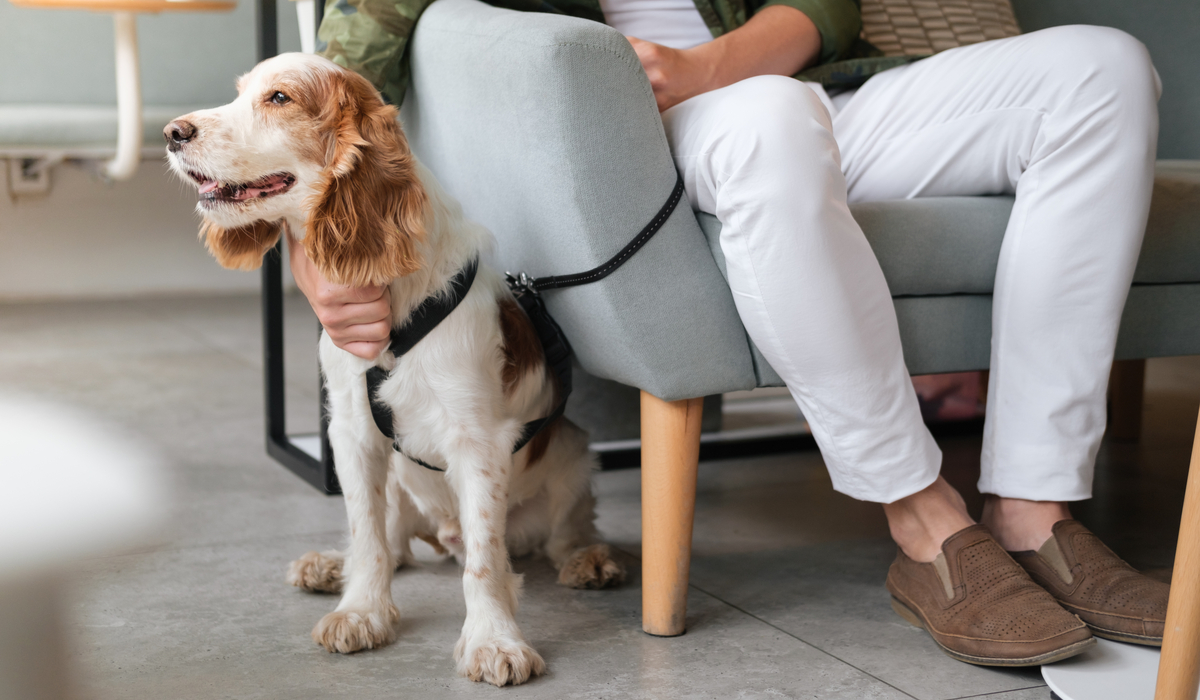
Here are a few other examples of how to help your dog build confidence. If your dog’s afraid to meet new dogs, ask a friend with a well-socialized dog to help you out. You can walk with your dogs parallel to each other, but far enough away that the two pooches can’t actually touch.
As your dog’s confidence builds with this new friend, you can start to move closer to one another. Before too long, he’ll have a new best dog friend he feels comfortable around, and he may even start playing too.
Now, let’s imagine your dog is afraid of men. Ask a male friend to help you build confidence in your canine buddy. Have him sit a safe distance away from your dog and just have your dog sit and stay with you next to him.
Ask your male friend to start talking in a calm, soothing voice, and let your dog get used to that. As your dog gets more comfortable, ask your friend to move closer and talk to you. Always check your dog’s body language to make sure he’s not becoming too stressed.
Distance is your best friend
Be sure to proceed at the pace your dog is comfortable with and slowly move the man closer until he’s right next to you. Use your “touch” and “look at me” techniques to keep your dog’s attention on you and help him feel secure.
You probably notice these training methods all share some common features. First, you start by introducing the scary thing at a safe distance. You only move the scary thing closer when your dog gets comfortable with it. If your dog cannot be calm as the thing gets closer and cannot recover with more distance, then he is what trainers call “over threshold.” In this case, pause the training exercise and try again another time.
You also use lots of positive reinforcement to help your pooch feel like a good dog! You never want to use negative reinforcement as that will undermine his confidence in himself and you.
Counter-conditioning Training Techniques
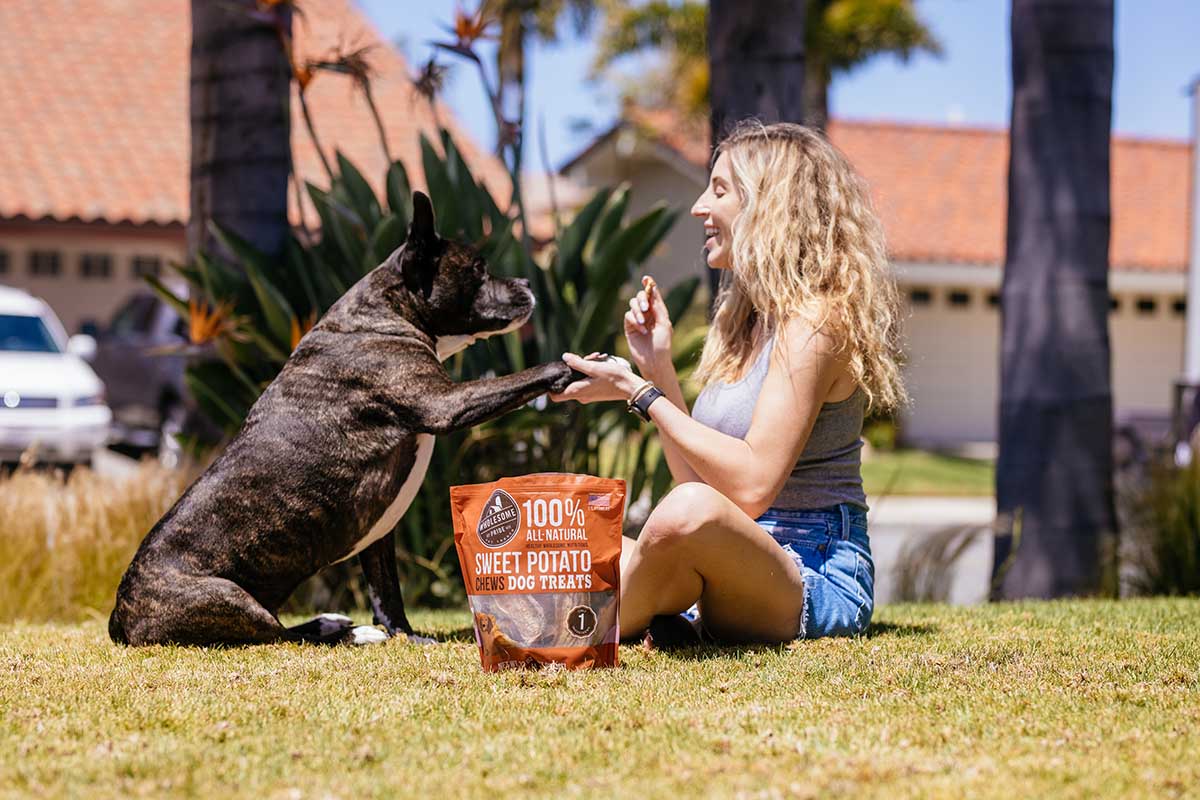
Another type of dog training is called counter-conditioning. This involves using a tolerable exposure level to scary things and following that exposure with a delicious treat. This should be something he loves but doesn’t normally get.
What is a tolerable level of exposure differs for every dog and also the problem he has. For example, your dog might not like having his feet touched, and he might not even tolerate your hand getting too close to his feet.
For this level of discomfort, you’d need to start by having your hand on the floor a safe distance away from his feet. Give him his treat as a reward, then, you can slowly move your hand closer.
You should always give him a treat each time you move your hand closer until you’re finally able to touch his feet. Basically, you’re trying to reverse his conditioning. He’s been conditioned to feel insecure about his feet being touched. You’re trying to turn that negative experience into a positive one.
Note: This is a great technique for vet visits.
This technique is really all about timing. You have to watch your dog carefully to know when you can move forward and when you need to go back if it’s too much. Over time, this counter-conditioning can really turn your fearful dog into a new, confident dog, and it will build his trust in you too.
General Confidence Booster Tips
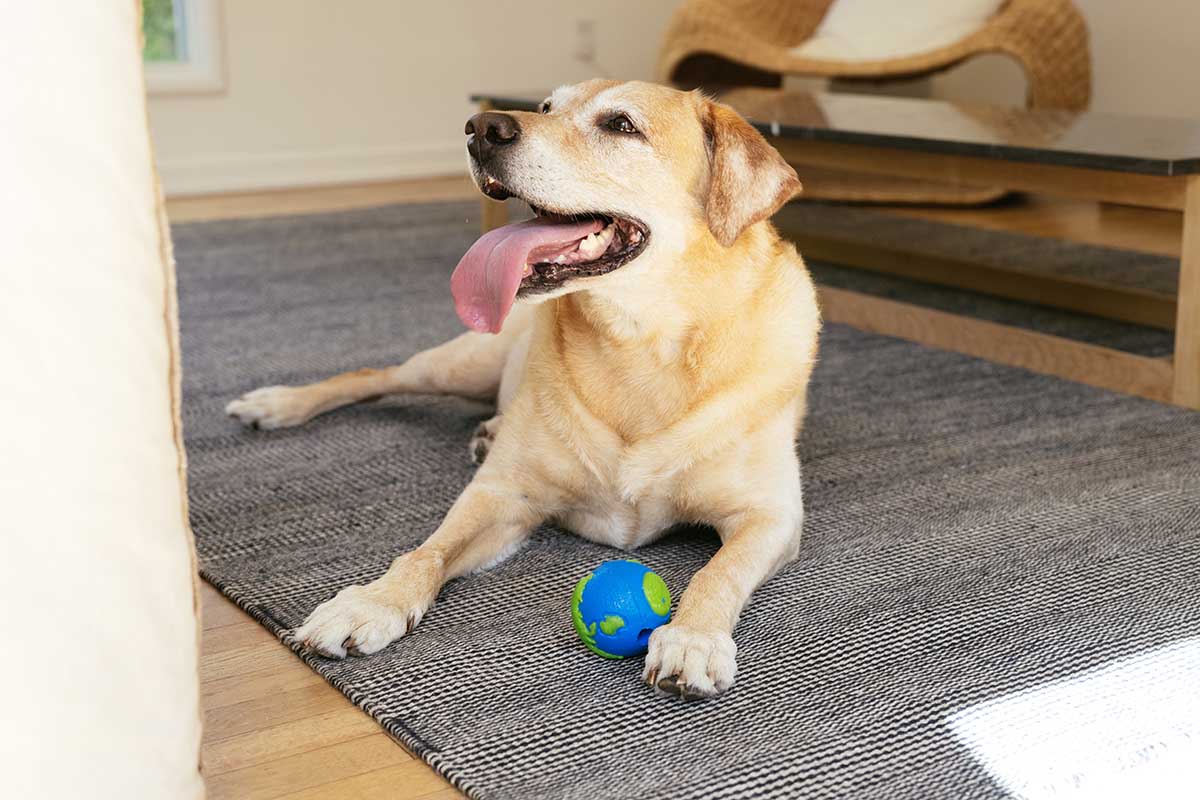
There are also some general things you can do to build your dog’s confidence. You can feed your dog using food puzzles and get him involved in nose work. Food puzzles are toys that contain holes at each end. You put food or treats inside and your dog has to maneuver the toy to get at them. When he does, be sure to praise him extensively.
Nose work is a type of dog training that uses your dog’s natural ability to hunt. He is trained to look for one of three scents that you can hide just about anywhere. There are competitions for this where dogs search in containers or vehicles and inside or outside.
Nose work is a great way to build your dog’s confidence because the more positive experiences he has, the more excited and eager he will be to have new experiences and adventures.
Final Thoughts
Shy dogs often have problems that can lead to illness or dangerous misbehavior. That’s part of why it’s so important to help your pooch be a confident dog. These various training methods can help, but if you’ve tried everything and your dog is still having problems, it might be time to consult with a veterinary behaviorist.
A professional dog trainer might also have some more suggestions for helping build your dog’s confidence. You want your best friend to be healthy, confident, and happy so he can enjoy new experiences with his best friend — you!

